The distributed module market has developed rapidly from the beginning of this year. TrinaSolar's 210mm Vertex distributed PV modules are experiencing strong supply and sales. More and more customers realize the value of 210Vertex PV modules, they firmly choose Trina Solar's 210mm Vertex PV modules. In order to better serve customers, the following are detailed answers to several customer concerns.
1. Module selection
Q: Which is the recommended modelofVertexfor distributed applications?
A: Based on 210mm Vertex technology platform, Trina Solar has developed 400W, 500W, 550W, 600W, 670W series VertexFamily. Vertex 500W series modules and Vertex 400W series modules are dedicated designed for distributed application scenarios. The latter is also known as Vertex S, featured with “Small in Size, Big in Power”. There are three types of Vertex S 400W modules: modules with silver frame, black frame and all-black modules. As for Vertex 500W, there are two types of modules: single-glass modules and bifacial dual-glass modules.
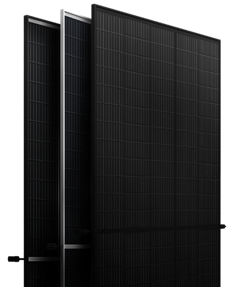
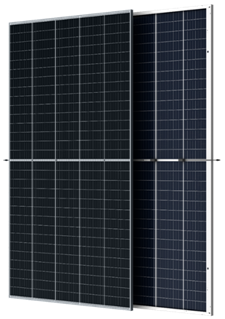
Vertex S module Vertex 500W module
2. About performance ¶meters
Q: What are the specific values of 210mm Vertex 400W/500W series modules in terms of size, weight and efficiency?
A: The following table shows the specific performance and parameters of Trina Solar 210mm Vertex 400W/500W modules and how they compare to conventional 166mm modules. It is clear that the 210mm Vertex modules are more efficient.The module current is best optimized with main stream inverters.
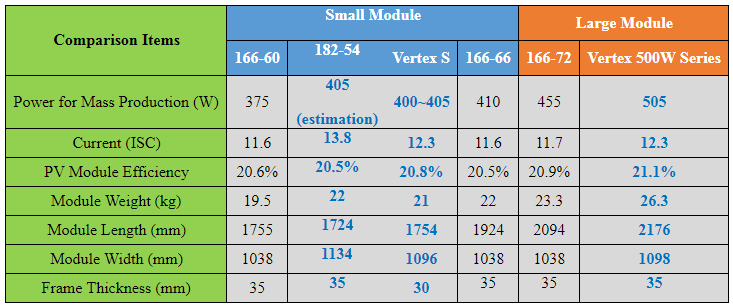
3. About efficiency
Q: Why is the 210mm Vertex module more efficient than the conventional 166mm module?
A: The current efficiency of P-type PERC cells is basically the same. The conventional 166mm module uses round-cornered monocrystalline cells, while Trina Solar's 210mm module uses square monocrystalline cells with high-density cell interconnection technology, so the gap between cells is narrower. In this way, higher power generation can be achieved in the same area, and thus higher module efficiency.
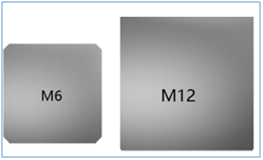
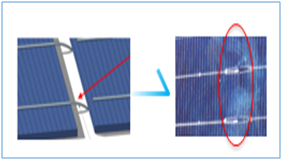
4. About large size
Q: Does a 210mm large wafer necessarily mean a large module size?
A: It is a misunderstanding. Large silicon wafers ≠ large size orhigh current modules. Trina Solar developed 210mm Vertex 400W/500W series separately applied in distributed scenarios.These two series are based on advanced technologies such as high-density cell interconnection, which makes the 210mm Vertex modules possess similar size with conventional 166-60P (375W) and 166-72P (455W) modules, however higher power. Vertex 400W and 500W achieve an excellent balance of module size, weight and efficiency, and easy to install on site.
5. About the current problem
Q: Are Vertex 400W/500W series modules high-current modules? Can conventional inverters be compatible with them?
A: No, it is not a high current module! Trina Solar adopts a tri-cut design, dividing 210mm cells into three, which effectively reduces the current at the maximum power point. Also, the actual data proves that 400W and 500W are not high-current modules. The current parameters of the two modules are detailed in the following table.

The above table clearly shows that the 210mm Vertex 400W and 500W series modules are both much smaller in current than the maximum allowable input value of conventional inverters. Therefore, when you design and select inverters, no need to worry about any adaptation and compatibility issues, and no need for any upgrades or modifications. They are perfectly matched all main stream inverters.
6. About logistics and storage
Q: Can 210mm Vertex 400W/500W series modules reducecosts in logistics and storage compared to conventional 166mm modules?
A: The following table shows the comparison of the logistics of 210mm Vertex 400/500W series modules and conventional 166 modules. It is obvious that the cost of logistics and storage of 210mm Vertex modules is significantly reduced. This provides installers and distributors with significant reductionin transfer and storage costs, greatly reduces crane rental and shift costs from ground to roof, and will also save time and improve efficiency.
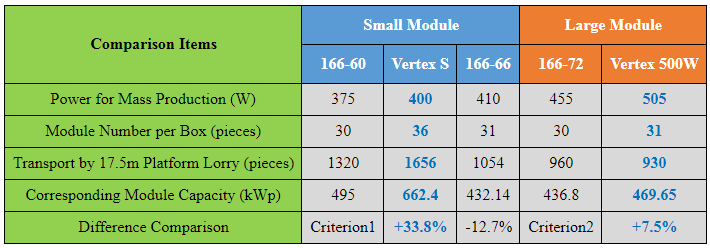
7. About module’s load capacity
Q: Vertex S modules are using 30mm frame. Is there any risk of its load capability? Is the mechanical load performance of 30mm frame weaker than that of 35mm frame?
A: The module mechanical load compatibility is mainly depend on material and frame design, not necessarily the load compatibility of 30mm frame is less than that of 35mm frame. On the contrary, Vertex S module adopts 30mm frame, by optimized design, increasing the thickness of the frame and expanding the frame cavity to distribute the load bearing, high strength material, therefore the mechanical load performance of the module is significantly improved. The maximum load on the front side of Vertex S module can reach 6000Pa, and that on the back side can reach 4000Pa, which is much higher than the 5400Pa on the front side and 2400Pa on the back side required by conventional modules.
8. About rackcompatibility
Q: Is there any inconvenience in rackinstallation for 210mm Vertex 400W/500W series modules? Does the 500W series module need 3 beams and 6 briquettes?
A: The superiormechanical load performance of the two modules have been mentioned before, and they are basically similar to those of the conventional modules, so there is no difference in the ease of installation. They are very easy to install.Therefore, when special mounting methods are used, such as a four-point long edge mounting method or a four-point short edge mounting method, a greater load can be supplied, and the mounting methods are more varied and convenient. The relevant mounting methods have already been tested in Trina Solar’s laboratory, and more flexible project design can be achieved in practice as described in the Trina Solar’s installation manual. In general, it is not necessary to use 3 beams and 6 briquettes for 500W series modules. The need for additional clamps to ensure the ability of the modules to withstand the load can be determined depending on the local meteorological conditions.
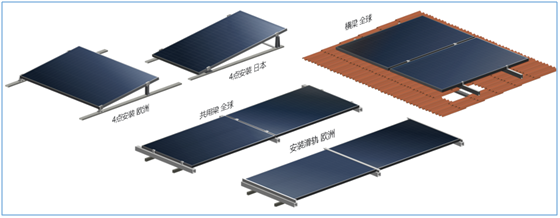
9. About advantage of BOS cost
Q: What are the advantages of 210mm Vertex 400W/500W series modules over conventional 166 modules in terms of BOS cost?
A: As distributed PV power generation gradually enters the subsidy-free era, lower BOS cost and higher power generation are needed to ensure the same returns. The 210mm Vertex 400W/500W series modules have improved module efficiency compared to the conventional 166mm modules, which can significantly increase the module power by 25-50W with similar size, and can achieve higher installed capacity on the same roof area. The increase in installed capacity can significantly reduce the cost per watt of trackers, cables, grid-connected cabinets (boxes), installation accessories, etc. and achieve lower BOS costs. According to the calculations by a number of design institutes and installers based on actual cases, the BOS cost reduction brought by 210mm Vertex modules can reach more than 1 centUSDper watt.
10. Summary of the core value of Vertex modules
Q: How should the core value of 210mm Vertex 400W/500W series modules be summarized?
A: The core values can be summarized as follows.
- Small in size, big in power: Compared with modules of similar size, the power can be significantly increased by 30~60W.
- More installed capacity, more power generation: Higher installed capacity and power generation are achieved on the same roof.
- Lower cost, more returns: Higher project returnsis achieved with lower system cost.
- Strong technology:Owing to the Trina Solar Vertex technology platform, many industry-leading technologies are developed.
